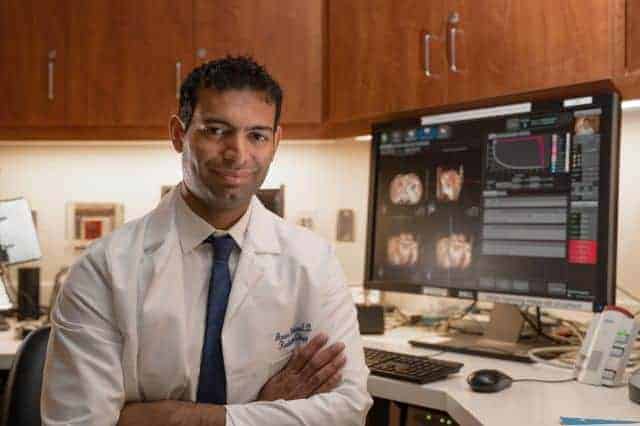Researchers at the UCLA Jonsson Comprehensive Cancer Center analyzed gene-expression patterns in the most aggressive prostate cancer grade group — known as Gleason grade group 5 — and found that this grade of cancer can actually be subdivided into four subtypes with distinct differences. The findings may affect how people are treated for the disease.
One subtype, which accounts for about 15% of the grade group 5 cancers, has highly aggressive features and is associated with much worse outcomes than the other subtypes. Another, which makes up about 20% of the tumors, appears to be much less aggressive and may not require intensified and aggressive treatments. Traditionally, all tumors in Gleason grade group 5 have been treated in the same way.
BACKGROUND
Prostate cancer is the leading solid-tumor cancer among men in the United States and a major cause of morbidity globally. While early–stage, localized prostate cancer is curable, current treatments don’t always work for everyone. To find out why standard treatment may work for some and not others, the UCLA researchers looked at tumors in the Gleason grade group 5 subset of prostate cancer. These tumors are at the highest risk to fail standard treatment, leading to metastasis and death. The researchers thought that studying the gene expression — the unique “signature” — of each cancer cell in these tumors might provide insight into how to make treatments more personalized for each patient.
METHOD
The researchers first analyzed data from more than 2,100 Gleason grade group 5 tumors, looking at how the genetic blueprints differed among the tumors. They identified distinct clusters of subgroups and validated their findings by analyzing an additional cohort of more than 1,900 Gleason grade group 5 prostate cancers.
IMPACT
By using the genetic information from tumors in men with prostate cancer, physicians hope to one day create more personalized treatments based on the actual characteristics of the cancer. This information will help optimize quality of life and avoid overtreating subgroups of men who may not need aggressive treatments.
AUTHORS
The study’s lead author is Dr. Amar Kishan, an assistant professor of radiation oncology at the David Geffen School of Medicine at UCLA and a researcher at the UCLA Jonsson Comprehensive Cancer Center. The co-senior authors are Dr. Joanne Weidhaas, a professor of radiation oncology and director of translational research at the Geffen School of Medicine, and Paul Boutros, a professor of urology and human genetics and director of cancer data science for the Jonsson Cancer Center. Boutros is also a member of the UCLA Institute of Urologic Oncology and the Eli and Edythe Broad Center for Regenerative Medicine and Stem Cell Research at UCLA. Other UCLA authors include David Elashoff, Dr. Rob Reiter and Dr. Matthew Rettig.
JOURNAL
The study was published in the journal European Urology.
FUNDING
The research was funded in part by an award from the American Society for Radiation Oncology and the Prostate Cancer Foundation, the Radiological Society of North America, and the National Institutes of Health.


